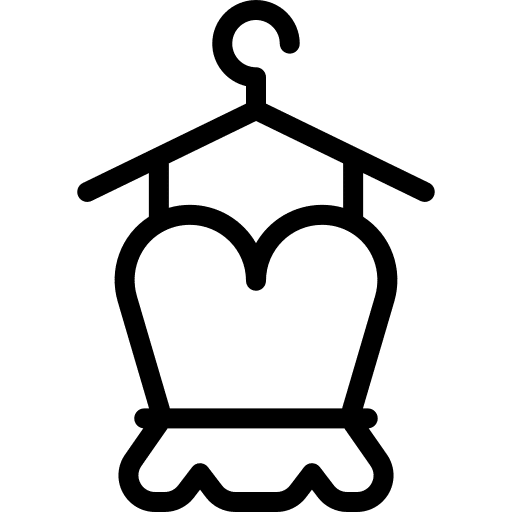With 2020 still fresh in our minds, it's no surprise that having a robust online selling capability is a must. But while most stories about the sudden shift to eCommerce focus on retail and consumers, the hidden story is B2B.
Some forecasts have 95% of all transactions moving online in the coming decades, and that includes B2B sales.
As early as 2018, some 48% of companies made between half and three-quarters of their purchases online, while nearly a quarter conducted 75% or more of their procurement online.
In 2021, B2B in eCommerce will keep growing. But just like B2C, it comes in many forms, sectors, and verticals — and with just as many misconceptions about how to do it right.
In this blog, we'll explain the biggest B2B eCommerce trends, show you how big the market is, delve into current B2B buying behaviour, and provide tips on how to be successful in B2B eCommerce.
What is B2B eCommerce?
Let’s start with the basics, what is B2B eCommerce? While B2C (Business to Consumer) eCommerce covers online purchases between businesses and individual shoppers, B2B E-Commerce refers to one business buying a product or service online from another.
B2B eCommerce used to mean businesses purchasing the basic supplies they needed to operate online. Perhaps a plumbing contractor buying tools or fittings from a B2B webstore, or a wholesaler selling food in bulk to supermarkets.
The growing popularity and huge market potential of online buying have opened up B2B eCommerce to more products and services.
Today, B2B buyers are sourcing everything from restaurant inventory to professional services online. Post-COVID, many — even most — say they prefer making B2B purchases via digital channels.
So it's no surprise that B2B eCommerce is starting to look more like B2C. Still, the complexity of business products & services demands a different tactical approach.
- B2B products can be technically sophisticated or require specialist knowledge to use or install them
- Pricing can vary based on volume or other discounts
- The average transaction size is usually higher
- B2B companies have to comply with tax and regulatory requirements
- The buying cycle can be longer, involving a longer chain of approval
With all these potential complications to manage, B2B companies have to do B2B eCommerce right.
B2B eCommerce Statistics
So, just how big is the B2B eCommerce market? Let’s look at the recent B2B eCommerce statistics.
Globally the B2B eCommerce market was worth USD 5.6 trillion in 2019, and it's expected to grow by 17.5% between now and 2027. The disruption caused by coronavirus lockdowns and social distancing has pushed more business buyers to procure and purchase products online.
Supply chains in every major economy from the UK and US to the EU and China were all hit hard by the pandemic. That’s supercharged the search for alternative suppliers and modes of buying. In Europe and North America, 2020 data from GoodData and Emarsys show online revenues were up by 37%, and online orders up by 54% since January in the US alone.
Some B2B ecommerce statistics that you need to keep in mind:
- According to Forrester, B2B eCommerce transactions are expected to reach USD 1.8 trillion by 2023 — in the US alone. That would mean 18% of all B2B sales in the country.
- Before 2020, B2B decision makers were mainly baby boomers and GenX’ers. in 2021, Forrester says close to three quarters of B2B buyers will be millennials.
- Google says 42% of B2B researchers use their smartphones to conduct B2B purchases.
- Next to these booming B2B eCommerce statistics, eCommerce just makes good business sense for B2B.
It helps reduce transaction costs and make purchasing smoother by automating manual processes and providing convenient self-service options. B2B eCommerce platforms can also automate elements of compliance and grow opportunities for collaboration with suppliers and distributors.
Alongside business efficiencies, however, there are also human-centric reasons for B2B’s eCommerce shift.

B2B buyers are humans too (and they’re Millennials)
One of the lessons of 2020 has to be that B2B buyers are people too.
While B2B purchasing behaviour may have been masked by POs and procurement processes in the past, we know now that B2B buyers have the same expectations as consumers. They want a seamless online experience and expect ordering online to be as comfortable and intuitive as booking an Uber.
Perhaps that’s because so many B2B buyers are millennials. According to Google, today’s typical B2B buyer is under 35, with budget responsibility that would have been reserved for senior executives in previous decades. They want to buy online, and increasingly that means via mobile devices.
According to a recent study, smartphones account for more than 40% of B2B eCommerce sales to large organizations. That’s a big number, but it’s only the beginning. Forbes says B2B eCommerce was a USD 6.7 trillion market last year, and the majority of those purchases happened on smartphones.
If there is a difference between B2B and B2C buyers, it's that B2B buyers are actually less price-conscious. They place a higher premium on a positive buying experience.
The lesson for B2B eCommerce brands? If you want to win and keep customers, you have to add value. That doesn’t mean endless sales or overloading the online experience with technical bells & whistles. It means optimizing the entire experience, from product research to fulfilment. You need to add efficiency and subtract time from the purchase journey.
B2B eCommerce comes in many forms
As the line between B2B and B2C begins to blur, many B2C companies are jumping into the fray and developing B2B offerings of their own. The reverse is true too. B2B companies selling directly to consumers.
Let’s look into the different types of B2B e Commerce.
Wholesalers
Wholesale B2B happens in many industries, including retail and foodservice. In the past a wholesaler sold to B2B companies over the phone, via email, or by faxing an order form. Today's wholesalers use B2B eCommerce platforms that allow them to display products easily and create a seamless experience for their B2B buyers.
Manufacturers
In B2B, manufacturers sell their products to other manufacturers (to be used as components) or wholesalers. Think of an automotive manufacturer making engines or batteries. They would sell those components to an automotive brand that builds entire cars and sells them on to consumers. The B2B buyers at the car-building brand are looking for a B2C-like buying experience too.
B2B2C
Business-to-business-to-consumer (B2B2C) eCommerce happens between a B2B and B2C business, connecting both directly to the end consumer. In B2B2C, a wholesaler or manufacturer partners with a B2B company or sells directly to the consumer. Transactions happen online through virtual storefronts, eCommerce websites, and apps.
Distributors
B2B products can be technically complex or have very specific use cases that make mass-market promotional techniques ineffective. Distributors work with manufacturers to add marketing capability and help them sell the goods they produce. In the B2B eCommerce model, the sale happens online, using the distributor’s online platform.
B2B eCommerce trends
Give how big the market is, B2B buyers now expect better online services. Along with market growth and opportunity, what are the B2B eCommerce trends companies need to look out for in 2021 and beyond?
B2B eCommerce Trend 1: Go mobile
Mobile commerce (mCommerce) is already bigger than desktop, so B2B brands need to be thinking mobile-first. B2B eCommerce apps can optimize the B2B buying experience and offer features mobile sites alone simply can’t. That’s why three-quarters of people say they prefer mobile apps over mobile sites.
That includes customer-specific pricing, personalized discounts for bulk purchases, credit options appropriate for B2B buyers, easy reordering, barcode scanners, push notifications, and more. It results in higher average order value, making the ROI of a B2B eCommerce app much higher for B2B companies.
Here’s more on why having a B2B eCommerce app is vital for your business.
B2B eCommerce Trend 2: Focus on delivering more value per customer
B2B companies depend on recurring customers, even more than B2C brands do. So loyalty and Share of Wallet are vital metrics to shoot for.
How? Delve into the stats for your biggest customers. What do they have in common? Are there similar customers who might be coaxed into buying more if you treated them in a similar way? Maybe you need more engagement. Perhaps you need to tweak the online buying experience to suit their preferences.
B2B eCommerce Trend 3: Make buying fun
As we said, B2B buyers are people too. Their expectations about eCommerce have been set by their experiences with consumer eCommerce, and they won't lower them just because they're buying for a business instead of themselves.
That means the B2B eCommerce experience you offer needs to be lively — and even fun if you’re going to win customer loyalty. Think of more personalized emails, push notifications triggered by location or user action, gamification, or something as simple as sending birthday wishes.
Don’t be boring — and talk like a person, not a business.
B2B eCommerce Trend 4: Make B2B buying more personal
Fun also means personal. B2B buyers want purchasing experiences that recognise their personal preferences, as well as their business needs.
When buying business products or services online, studies have shown that a third of buyers prefer making purchases from companies that personalize the buying experience with data. That means implementing capabilities like customized product catalogues, one-click reordering, and predictive ordering based on previous activity.
B2B companies that focus on personalizing the eCommerce experience have invested in tools like ERP and data harvesting, and use customizable B2B eCommerce platforms that enable them to make the selling process unique to their brand.
B2B eCommerce Trend 5: Look to B2B online marketplaces
Online marketplaces like eBay, Amazon and Alibaba dominate online retail, accounting for more than half on online sales globally. B2B eCommerce is on a similar trajectory. Three-quarters of B2B procurement is forecast to happen on B2B online marketplace within the next three years.
The reasons are similar for both. Marketplaces are more efficient and act as a one-stop-shop for B2B buyers. They also drive innovation. Stats from Gartner show B2B marketplaces support the development of new or improved business models that speed up sales, deliver new capabilities, create broader buyer-wholesaler ecosystems, and enable B2B brands to find new revenue streams.
B2B eCommerce examples
Global Beer Company
One of the top 3 brewing giants in the world developed a smartphone app to allow its delivery drivers to work directly with store owners on fulfilling orders.
The company receives and delivers orders all over Africa. And while most shops have a smartphone, laptops and PCs are less common. Creating an eCommerce app made the ordering and buying process faster, particularly for the many small shops — often in remote, rural locations — they deliver across the country.
By replacing paper forms with a fully-digital, mobile-first buying process, they reduced the time required to submit a new order by 50%. Adding personalized push messages delivered through the app is enabling the brewer to proactively keep store owners updated about new products, and alert them when out-of-inventory items come back into stock.

Atlanta Light Bulbs
After launching a new website with improved eCommerce capability, US B2B Atlanta Light Bulbs extended the customer experience by creating an accompanying mobile app. The app set them apart from competitors by making ordering even faster and simpler for one-the-go B2B buyers.
Customers can request custom quotes in seconds, or even name their own price for a product. If the company accepts, they receive a message. If so, the customer can choose to make a purchase and go to checkout directly from the app. If the proposed price isn’t accepted, ALB comes back with a counter price to keep the conversation going.
By segmenting customers into groups, Atlanta Light Bulbs can offer discounts based upon the forecast value of that segment. Customers are then categorised into different rewards programs that provide store credits with each purchase, driving loyalty and incremental revenue.
B2B apps can do more than just move product. They can improve the buying and ordering process, adding efficiencies that make life easier for buyers.
JMango360, the #1 name in b2b eCommerce apps
B2B eCommerce is getting bigger, and every B2B brand needs to pay attention. In less than two years, B2B eCommerce will be twice the size of B2C, pushing past USD 1.8 trillion. With 90% of mobile time spent in apps, people want B2B to be as fast & frictionless as any B2C experience.
B2C companies are watching developments closely, as they increasingly eye B2B eCommerce as one of their next expansion plays. It’s safe to assume your competitors are watching too.
Whether it's launching B2B eCommerce apps for simple reordering of products, or addressing complex logistics and supply chain issues, at JMango360 we've been helping B2B brands raise their eCommerce game for more than a decade.








